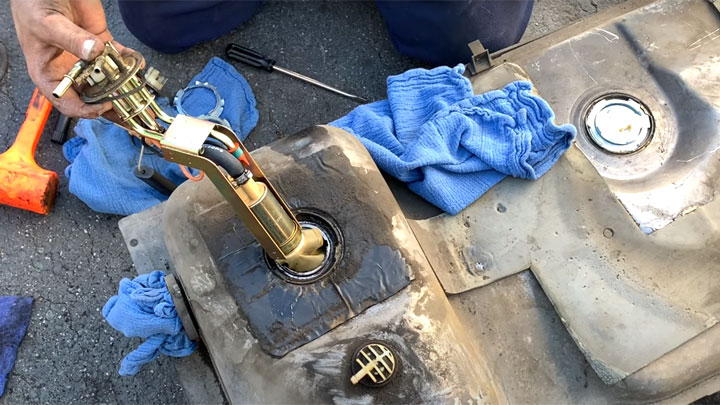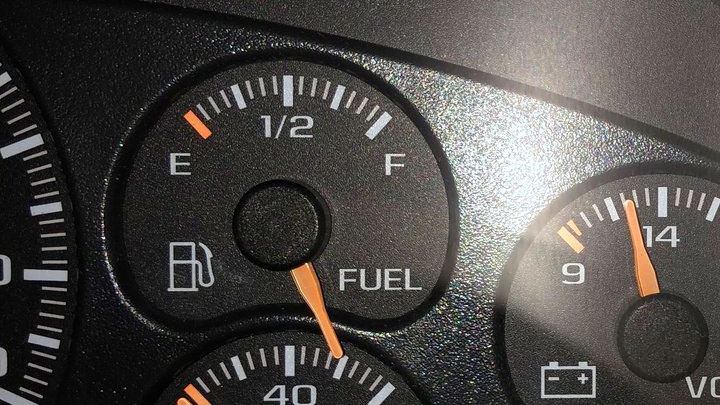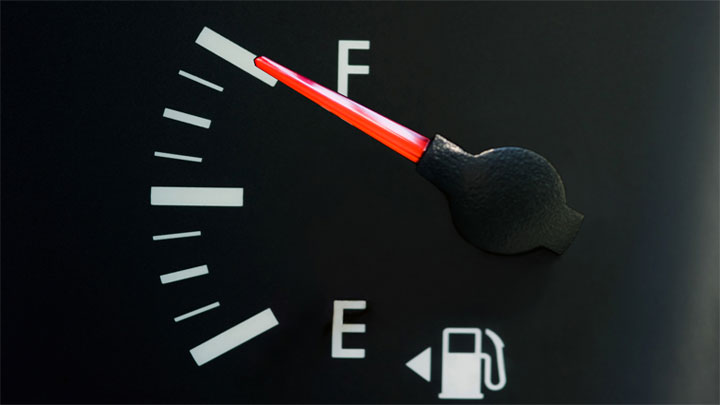3 Symptoms of a Bad Fuel Sending Unit (and Replacement Cost)
One gauge in your dashboard that you rely on more than you realize is the fuel gauge. It’s a critical part of making sure your vehicle stays on the road, and you likely take it for granted. But behind every fuel gauge, a fuel sending unit keeps it working the way it should.
So how do you know when a fuel sending unit is failing, what causes it to go bad, and how much is it going to cost you to replace it?

What is a Fuel Sending Unit?
The fuel sending unit has a few different names. Other commonly used names include the fuel level sending unit, a fuel gauge sender, or even a float gauge.
No matter what you call it, the fuel sending unit sends a signal to the fuel gauge in your vehicle to let you know how much fuel is currently in the tank.
Bad Fuel Sending Unit Symptoms
If you have a bad fuel sending unit, there will be some telltale symptoms that you can’t miss. However, while these symptoms are pretty straightforward and easy to spot, you’ll need to rule out a faulty fuel gauge before replacing the fuel sending unit.
#1 – Erratic Fuel Gauge

If the fuel gauge is all over the place and can’t seem to stay at one reading, the problem might be the fuel sending unit. This can happen if the float gauge moves around more than it should or if the variable resistor in the fuel sending unit isn’t working properly.
When this happens it can lead to extremely erratic behavior at the fuel gauge as the signal coming from the fuel sending unit rapidly changes.
#2 – Incorrect Fuel Gauge Readings
Whether you just filled up the fuel tank or you’re riding on empty, the fuel gauge should tell you just how much fuel you have. If the readings don’t match what’s actually in the tank, the problem could be the fuel sending unit.
However, keep in mind the problem could also be the fuel gauge itself, so it’s a good idea to test the fuel sending unit before replacing it.
Related: 5 Symptoms of a Bad Fuel Tank Pressure Sensor
#3 – Stuck Fuel Gauge

One of the most common ways a fuel sending unit will fail is that it will get stuck in a certain position. When this happens, the fuel gauge won’t register any changes whether the fuel tank is full or empty!
While a fuel sending unit will typically end up stuck in the full empty position, it can get stuck in any position.
What Causes the Sending Unit to Fail?
The primary reason a fuel sending unit fails is age. The most likely component in the fuel sending unit to fail is the variable resistor. Over time the resistor can start to gum up from fuel or it can begin to corrode. Even small changes can affect the fuel sending unit.
Another option is that something gets between the variable resistor and the metal rod, keeping it from moving. If this happens, the fuel gauge will always read the same amount no matter how much fuel is in the tank.
You can help mitigate this risk by only using higher-quality fuel, but eventually the metal rod can corrode and get stuck in a specific position.
How Does a Fuel Sending Unit Work?
A fuel sending unit consists of three main components. The first part is the “float.” The float is a simple component comprised of a buoyant material that won’t break down in fuel.
The float connects to the second component in the fuel sending unit, the metal rod. With the metal rod, the name says it all. It’s a thin metal rod that connects the float with the variable resistor. The important part of the metal rod is that it can move to accommodate the float.
The float should always sit on top of the fuel. The metal rod moves to allow the float to move to the correct position inside the fuel tank depending on the current fuel level.
The final part of the fuel sending unit is the variable resistor. The variable resistor receives a small signal voltage from the vehicle’s battery and depending on the current fuel level of the vehicle it adjusts the resistance to reduce the signal.
The vehicle’s computer gets the signal and converts the voltage to a fuel percentage and sends that to the fuel gauge.
Here’s a short video on how this process works:
Sending Unit vs Fuel Pump
Sometimes when people think about a fuel sending unit, their mind goes to a fuel pump. That’s because the term “sending” in the name of the fuel sending unit is a bit of a misnomer. The fuel sending unit doesn’t send any fuel, it sends a signal that tells the computer how much fuel is in the tank.
The fuel pump sends the fuel that the computer requests to the combustion chamber, the fuel sending unit has nothing to do with that process. All it’s there for is to tell you how much fuel is inside the fuel tank!
See Also: Symptoms of Too Much Water In Your Fuel Tank
Fuel Sending Unit Replacement Cost
Best places to order parts? See: 19 Best Online Auto Parts Stores

If you’re taking your vehicle to a garage to have them replace the fuel sending unit, you can expect to spend anywhere between $900 and $1,100 for the repair. However, if you’re willing and able to do the work yourself you can save yourself quite a bit of money.
That’s because the cost of a new fuel sending unit is usually between $150 and $200. All the rest of the costs come down to labor. Labor costs for this job typically range between $800 and $900.
The job itself is a labor-intensive process, but the big thing for DIY mechanics is you need something to hold up the fuel tank while you remove it and reinstall it. You’ll also need to remove all the fuel lines.
Overall, it’s not all that challenging of a job, but it takes a fair amount of time, and it’s best to use a hydraulic jack to support the tank.
Related: Fuel Pump Control Module Replacement Cost
- P0521 Code (Symptoms, Causes, How to Fix) - Mar 22, 2024
- How to PROPERLY Clean 5 Types of Steering Wheel Materials - Feb 19, 2024
- What Should You Do If Your Check Engine Light Comes On? - Nov 6, 2023
